5 Surreal Details in Caravaggio’s Art
The hidden subtleties of the Master of Light...
The death of Caravaggio is one of the greatest mysteries in the history of art.
In 1610, after years of exile, the painter died under enigmatic circumstances while on his way back to Rome. Some theories suggest he was poisoned; others claim he succumbed to a fever after sustaining an injury…
When news of his passing reached the literary world, Giambattista Marino, one of the most celebrated poet of the era, beautifully put into words the sense of loss and awe that Caravaggio inspired:
Death and Nature made a cruel plot against you, Caravaggio: Nature feared being surpassed by every image you created. Death burned with indignation because those cut down by his scythe you returned to life, with interest.
Beauty is truth is a reader-funded publication that relies entirely on your support. There are no ads here, just a passion for sharing beauty.
Upgrade your subscription for just a few dollars a month to help our mission and access members-only content 👇🏻
Just as his death is shrouded in enigma, his paintings are filled with hidden symbols and subtle intricacies that have perplexed scholars for centuries. One of the most striking features of his work is his use of real-life models — often drawn from the streets of Rome — to portray biblical figures and saints. Some experts suggest that these figures were not chosen solely for their resemblance to religious icons but also as part of the artist deeper commentary on the human condition. By using prostitutes and beggars as models, he was visually expressing a core Christian idea: that God’s grace extends to everyone, even the lowest in society.
In Judith Beheading Holofernes, for example, Judith’s face is believed to have been modeled on Fillide Melandroni, a famous Roman prostitute who appears in several of the Italian master’s works.
Caravaggio’s own life reads like a story too extraordinary to be true. Orphaned at a young age, he rose to become a defining figure of Italian Baroque painting while simultaneously leading a life of danger and rebellion. After killing a man in Rome, he fled into exile and later sought redemption by joining the Knights of Malta. Arrested for injuring a senior knight, he escaped from prison and tried to barter his art for a royal pardon. His existence was a relentless collision of brilliance and chaos, a life as vividly painted as the masterpieces he left behind.
For a figure this larger-than-life, it’s no surprise that his art is layered with mystery, meaning, and unexpected revelations. Here are some of the most remarkable hidden details in the work of Michelangelo Merisi, the legendary Caravaggio…
1. Supper at Emmaus (1601)
Caravaggio’s Supper at Emmaus hides a secret in plain sight. A tiny fray in the weave of the wicker basket on the edge of the table forms two carefully intersecting curves — one rising, one falling — that suggest the stylized shape of a fish, a symbol of early Christianity.
For centuries, this delicate detail went unnoticed amid the dramatic scene of the resurrected Christ revealing himself to astonished disciples.
Yet the basket is not the only hint: the shadow cast by the fruit on the shroud-like tablecloth traces an even more distinct fish, its sharp lunate tail arcing behind it, subtly guiding the viewer’s gaze toward the basket.
In these imperceptible touches, Caravaggio wove faith into form, turning the everyday into an emblem of divine revelation.
2. Bacchus, (c. 1596)
The artist left a clue inside Bacchus: his reflection, disguised within a carafe of wine…
Through the use of multispectral reflectography — a sophisticated infrared technique that can penetrate centuries of grime and layers of varnish — researchers have uncovered a tiny, previously invisible image.
The miniature portrait appears to depict a young man, believed to be Caravaggio at around 25, with dark, curly hair, subtly gazing out from inside the carafe, caught in the shimmering reflections of the wine. This is undoubtedly one of the most intricate, enigmatic, and secretive self-portraits of all time.
3. David with the Head of Goliath (1609–1610)
Drawing inspiration from Ottavio Leoni’s portrait of Caravaggio, many art historians suggest that David with the Head of Goliath may serve as a subtle double self-portrait.
In this interpretation, the youthful Caravaggio — his “inner child” — clutches the severed head of his older self. The impetuous and turbulent impulses of his youth, which ultimately wreaked havoc on his adult life, seem reflected here with an almost hermetic introspection. The painting depicts a biblical story, yet it resonates on an intensely personal level, as though Caravaggio were contemplating his own fate through the lens of sacred narrative.
Some scholars also propose that the work might have been offered to Cardinal Borghese, the papal official capable of granting Caravaggio a pardon for murder, reading the painting as a veiled plea for clemency.
4. The Flagellation of Christ (1607)
One of the most debated aspects of The Flagellation of Christ is the presence — revealed by X-rays — of a male figure on the right side of the canvas.
Emerging from the torturer’s shoulder, the mysterious figure looks toward Christ. Although only partially painted, the face is fully defined, complete with a mustache and beard.
In art, this phenomenon is known as pentimento — Italian for “repentance.” It refers to traces of earlier images that have been altered and painted over, revealing the artist’s evolving vision beneath the surface.
Scholars have proposed several possibilities for his identity: he could be a portrait of the patron, Tommaso De Franchis, or, as suggested by art historian Maurizio Marini, a representation of Saint Francis — a subtle tribute to the saint who shares the patron’s family name.
5. Narcissus (1597–1599)
I have always been drawn to this painting. It radiates a quiet, intense melancholy: Narcissus is trapped in an endless gaze with his own reflection, surrounded by darkness, as if the outside world has ceased to exist.
The composition is strikingly symmetrical, with the lower half mirroring the upper in a way that feels almost magical. Yet the reflection in the water is not a perfect duplicate of the young man gazing into it. Some scholars suggest that Caravaggio may have used himself as the model for Narcissus’s reflection: the hand touching the water subtly echoing the painter’s own hand holding the brush…
It’s hard to imagine now, but Caravaggio nearly disappeared from art history.
Despite influencing masters of the caliber of Rubens, Velázquez, and Rembrandt, within decades of his death his works were often overlooked or attributed to less controversial painters. Shifts in taste and the rise of other Baroque artists further marginalized him. By the 18th century, many of his paintings were lost or misattributed, and his influence slowly faded into obscurity. It was only in the 20th century that historians began to reassess his work, sparking a revival of appreciation for his significance in Western art.
In the 1920s, art critic Roberto Longhi revived interest in Caravaggio, emphasizing his pivotal role in shaping the trajectory of painting: “Ribera, Vermeer, La Tour and Rembrandt could never have existed without him. And the art of Delacroix, Courbet and Manet would have been utterly different.”
Art historian Bernard Berenson stated: “With the exception of Michelangelo, no other Italian painter exercised so great an influence.”
Caravaggio’s epitaph, composed by his friend Marzio Milesi, reads:
Michelangelo Merisi, son of Fermo di Caravaggio – in painting not equal to a painter, but to Nature itself – died in Port’ Ercole – betaking himself hither from Naples – returning to Rome – 15th calend of August – In the year of our Lord 1610 – He lived thirty-six years nine months and twenty days – Marzio Milesi, Jurisconsult – Dedicated this to a friend of extraordinary genius.
Thanks for reading! A quick reminder: this newsletter runs entirely on reader support. If you enjoy the content, consider contributing a few dollars a month. Your support makes a huge difference — and as a bonus, you’ll get access to exclusive articles, the subscriber-only chat and the full archive. Thank you!


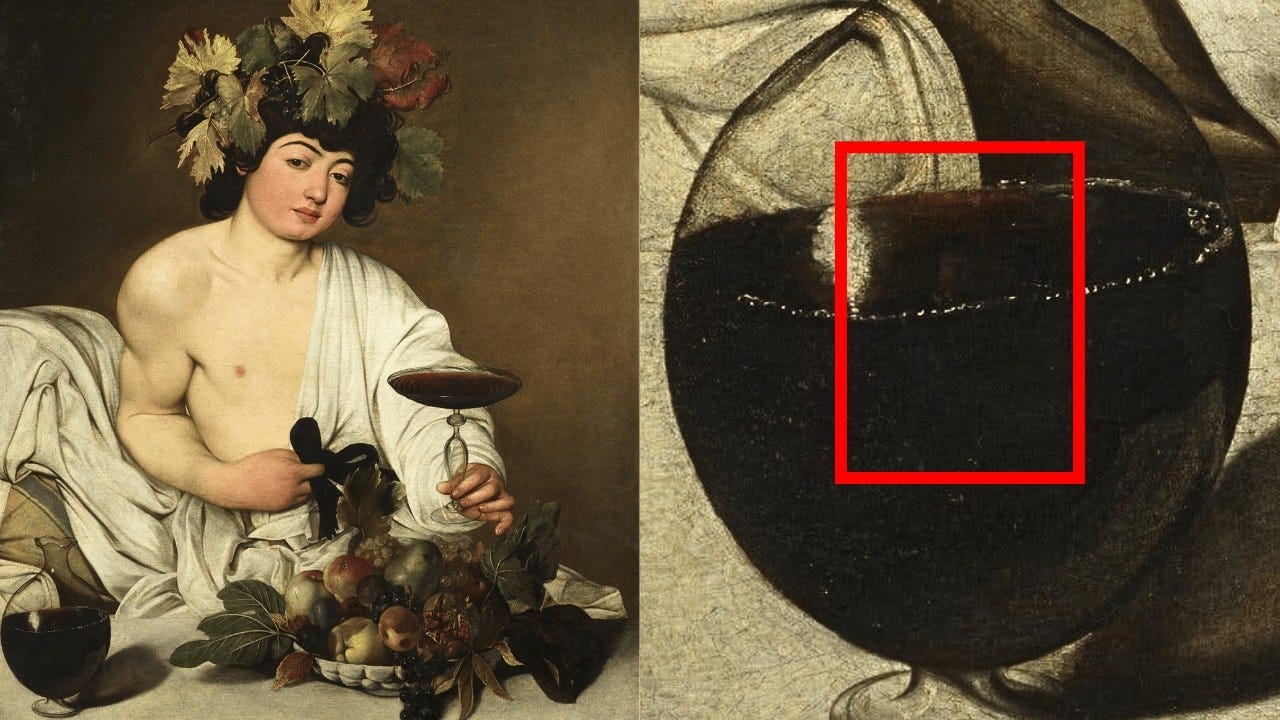
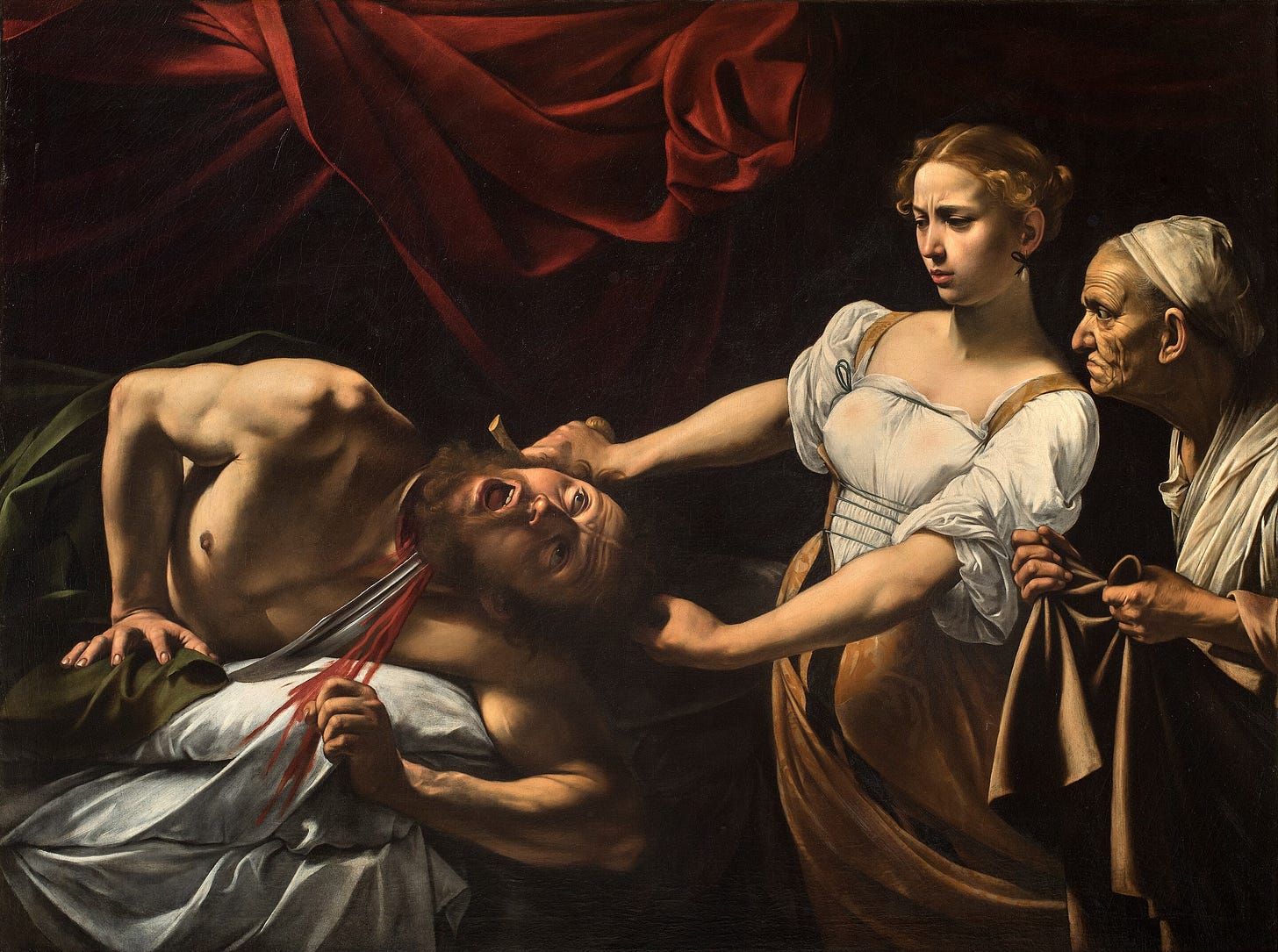
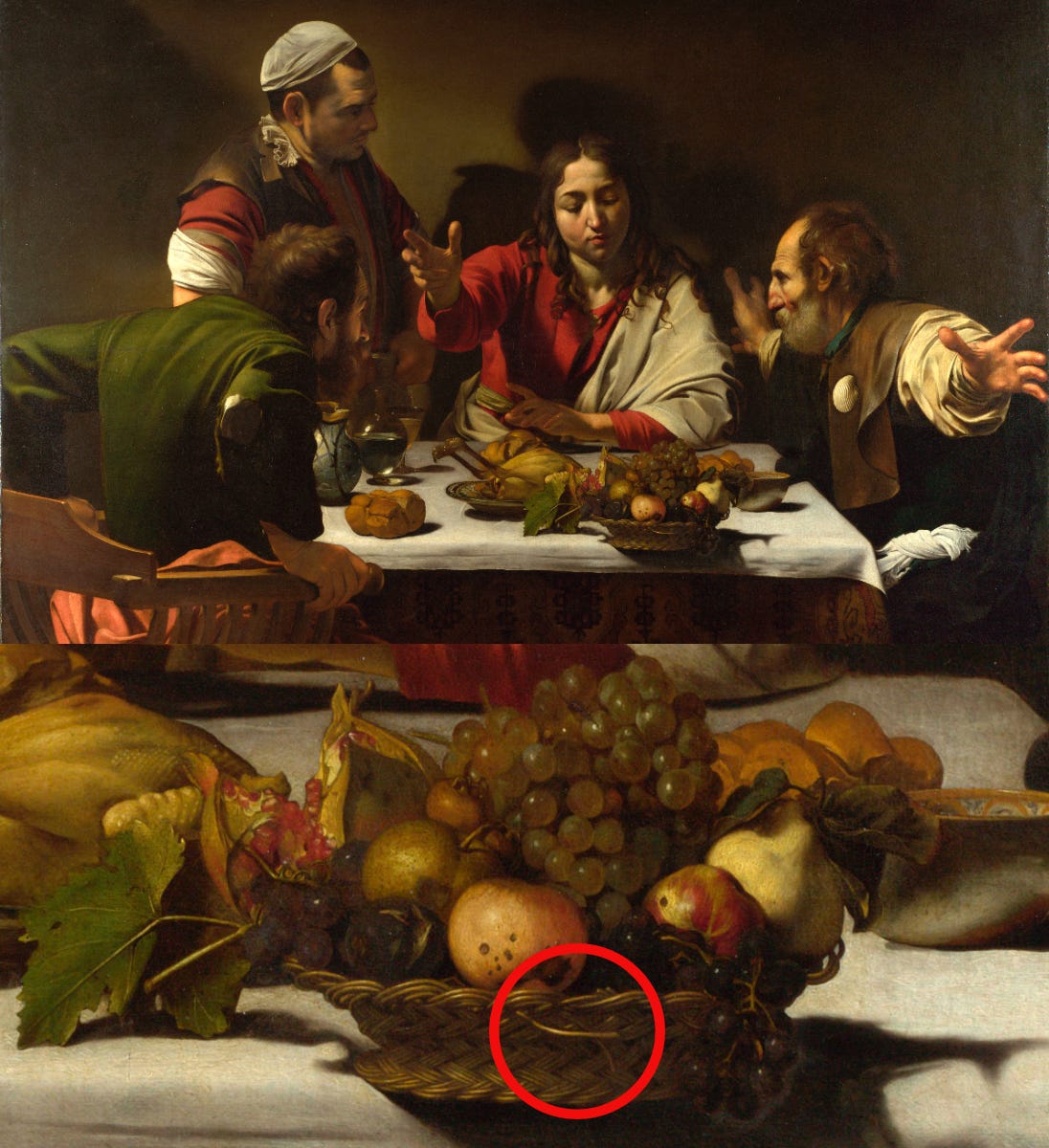
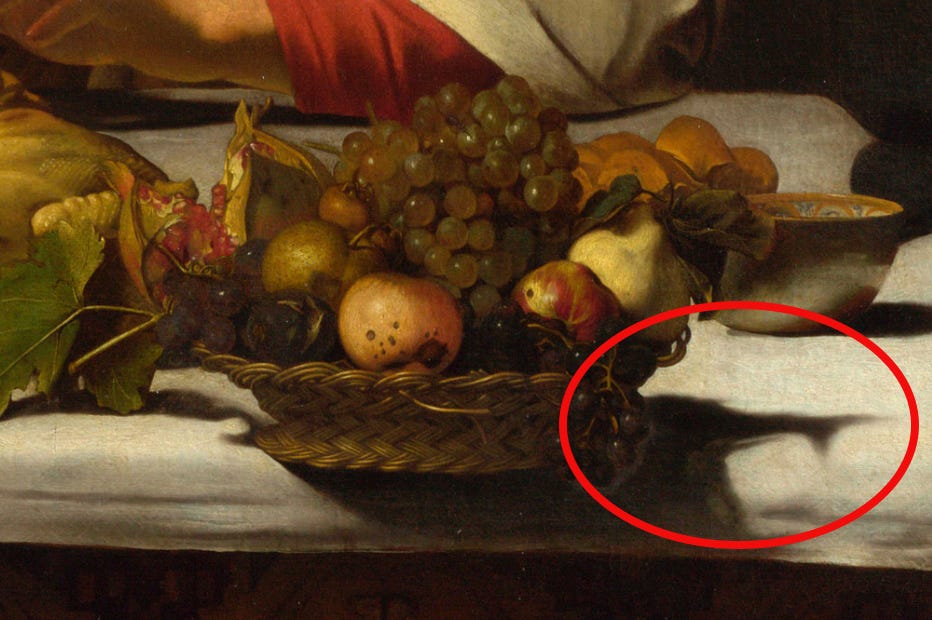
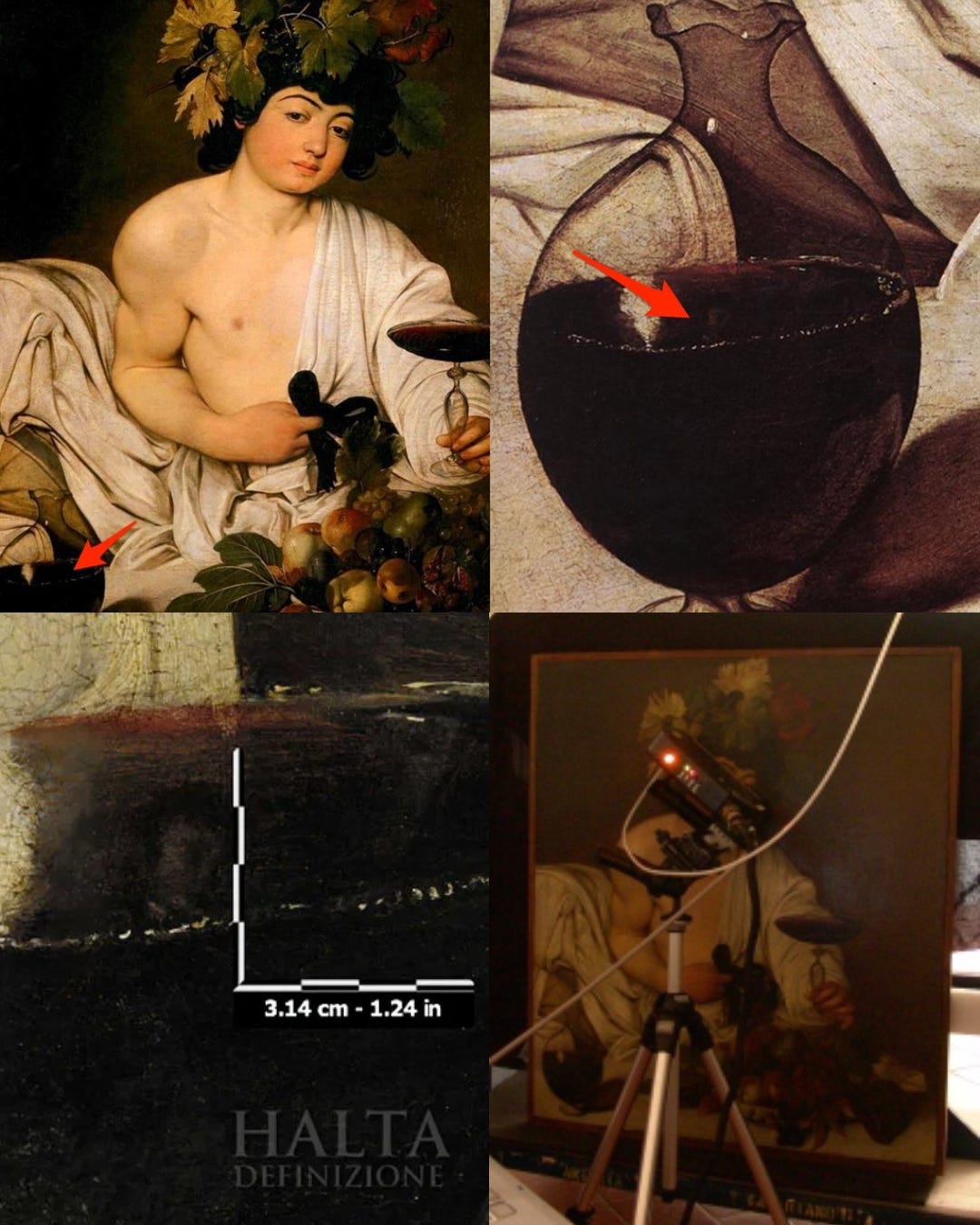
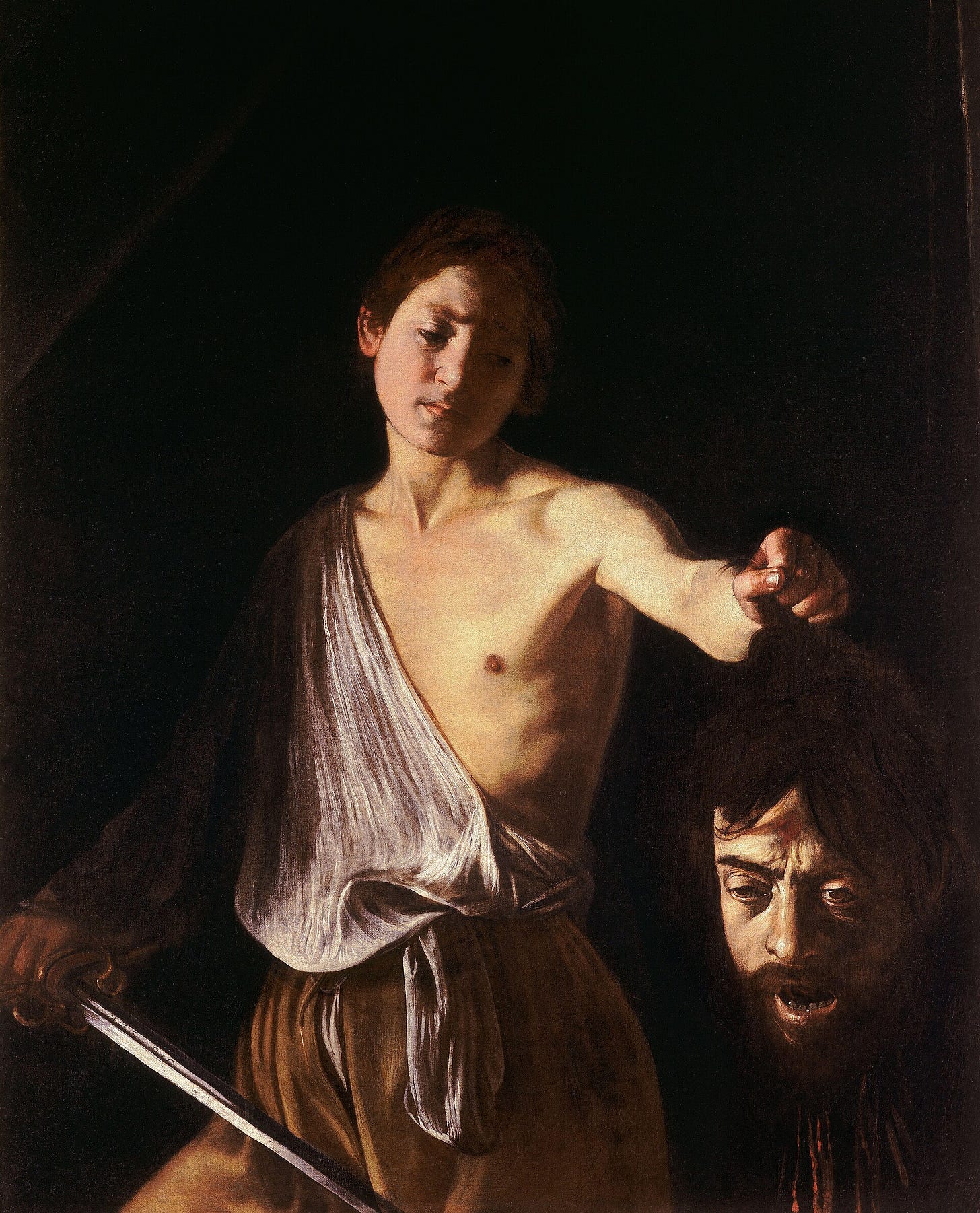
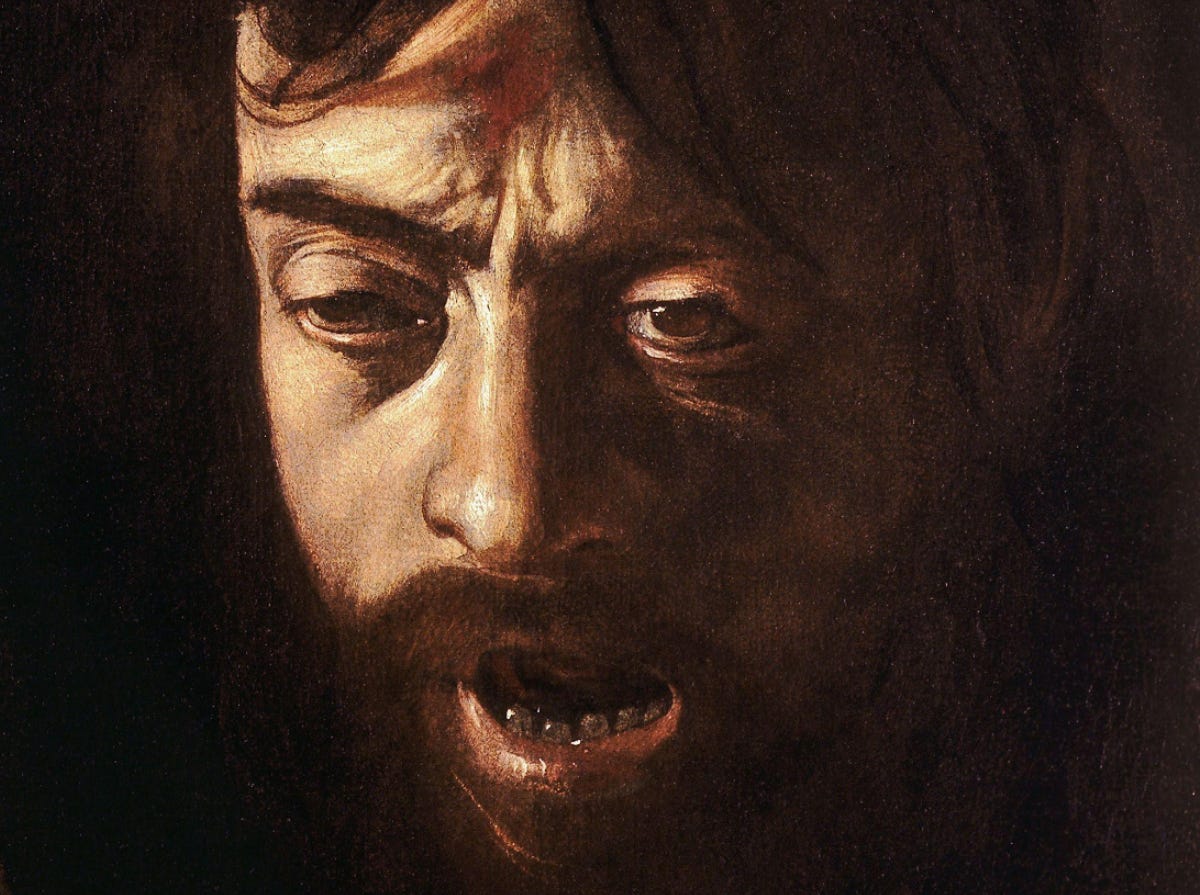
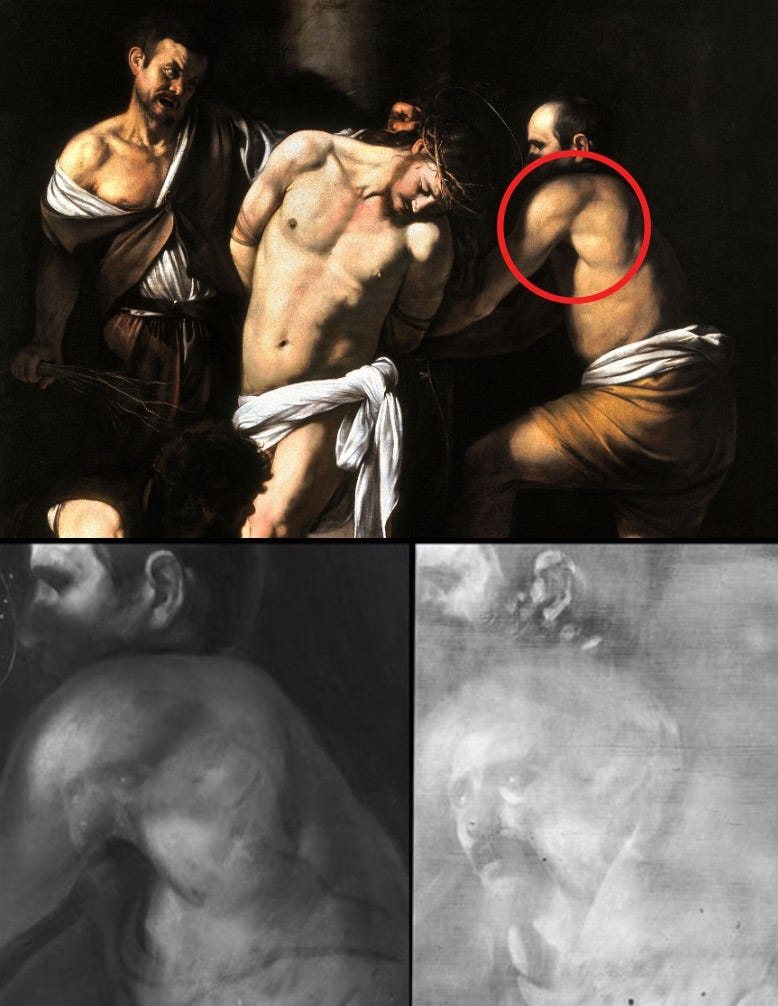
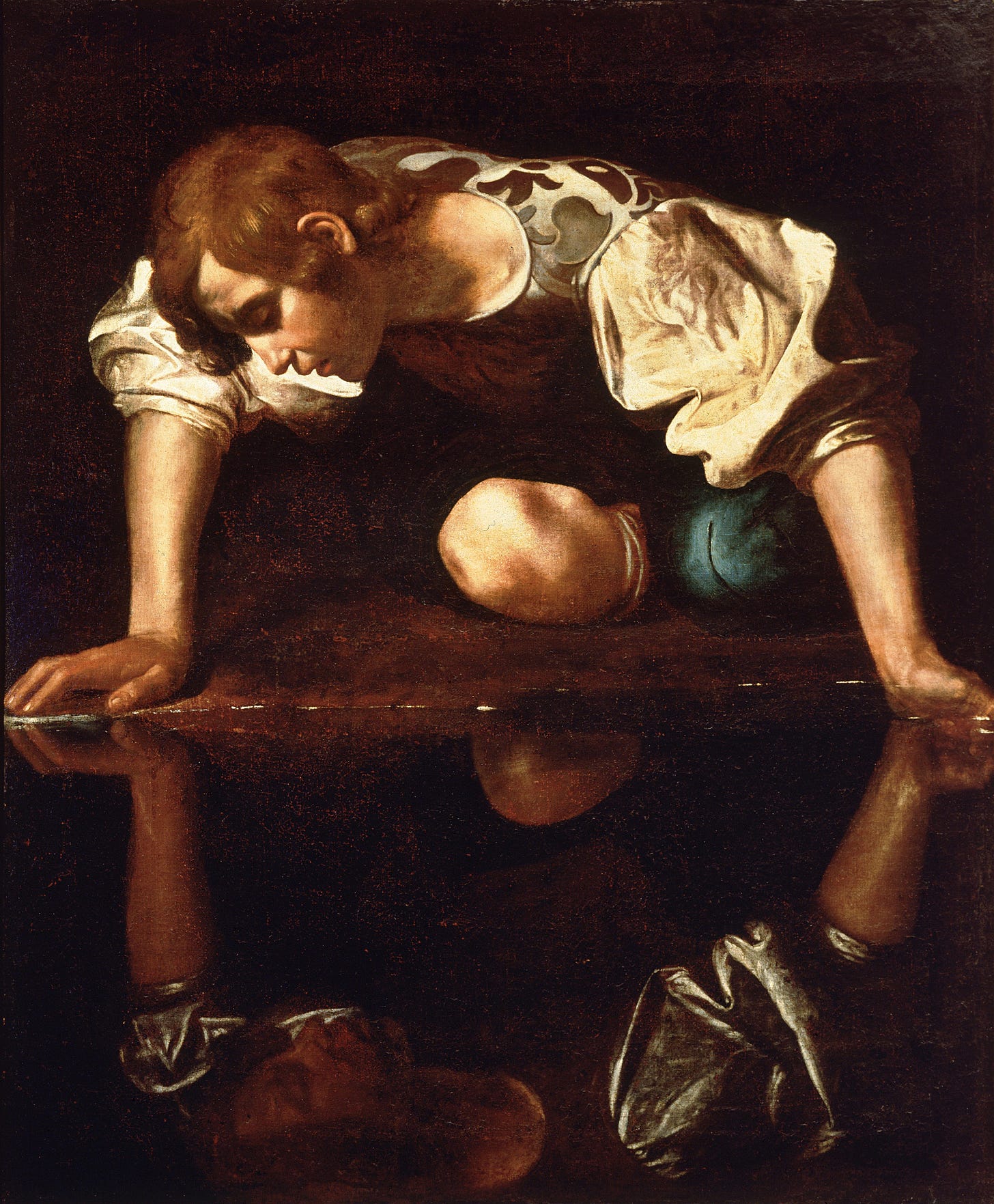
Fascinating appreciation for the smallest of details.
This was like a detective story...so interesting. I especially enjoyed the patron in the shoulder of one of the figures, the example of pentimento. That was very clear to see. Thank you for bringing all this to our attention!